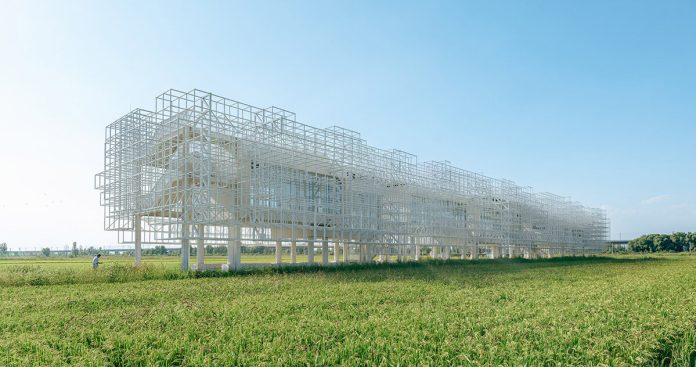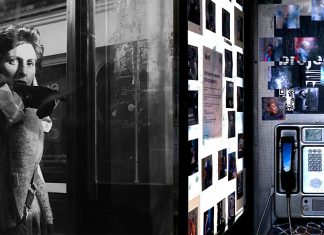an infrastructural ruin reimagined by BUZZ
In the vast wilderness of Zhangjiakou, China, BUZZ’s Manor Mirage occupies the site of an abandoned concrete bridge. The bridge’s piers remain deeply embedded in the earth, their rigid geometry interrupting the visual flow between the field and the open sky. The team approached this fragment of infrastructure not as a ruin to erase but as a foundation to reimagine.
Rather than concealing the bridge’s weight, the architects used it as the core for a structure that seems to hover. The renovated building rises above the old bridge through a sequence of elevated slabs and a refined, lightweight roof and facade system. The result is a horizontal composition that blurs the concrete and seems to float above the landscape.

images © BUZZ
manor mirage appears to float over vast fields
The surrounding topography frames the Manor Mirage by BUZZ. Mountains enclose the site to the north and south, while to the east the horizon draws a decisive division between land and air. The architects‘ intervention reconciles these elements by transforming the bridge from a blunt interruption into a threshold. The Manor Mirage grows horizontally across the existing structure, its lifted ground floor allowing air and light to pass beneath. The approach dissolves the visual barrier once imposed by the bridge, allowing the agricultural landscape to remain undisturbed.
Through glass and metal, the building assumes the qualities of reflection and diffusion. Its curtain walls mirror the wheat field and shifting clouds, and the white steel frames register as a rhythm of lines. It is part architecture, part optical illusion. From a distance, the building reads as a diffused extension of the plain itself, rather than as a single object.
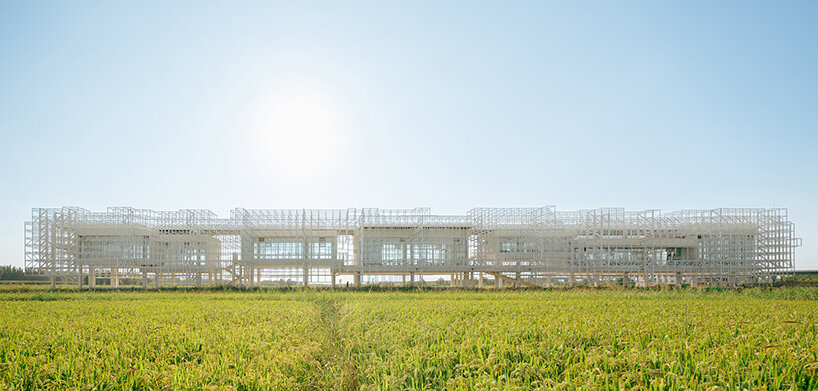
Manor Mirage by BUZZ rises lightly above an abandoned bridge in rural China
the pixelated facade system
The most distinctive gesture of BUZZ’s Manor Mirage lies in its outer skin. To reconcile the mass of the old bridge with the openness of the site, the team devised a ‘pixelated’ facade system composed of ultra-white glass and intersecting metal frames. These linear grids diffuse the building’s edges, breaking its solidity into layers of depth and transparency. As sunlight moves across the site, the frame’s density alternately reveals and conceals, lending a sense of vibration against the landscape.
This pixelation offers more than visual relief, the building is a translation of the language of the fields into architecture. Each grid cell recalls the point-like texture of sprouting wheat or flowering grass. The structure becomes a device for framing views of varying scales — from the horizon to a single stalk swaying nearby. Through this calibrated abstraction, Manor Mirage situates itself as both a fragment of the landscape and a tool for observing it.
The programmatic core of the project echoes the transitory culture of the Zhangbei Grassland. BUZZ envisioned the Manor Mirage as a flexible project for exhibitions, reading, and light dining, with terraces opening to the surrounding fields. On weekends it supports markets, workshops, and small-scale performances.
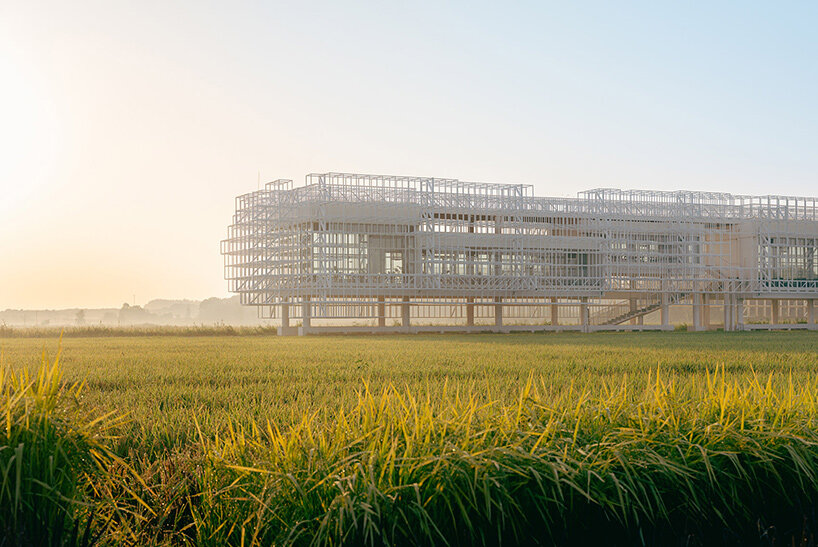
the design transforms a rigid concrete ruin into a cloud-like shelter in the wheat fields
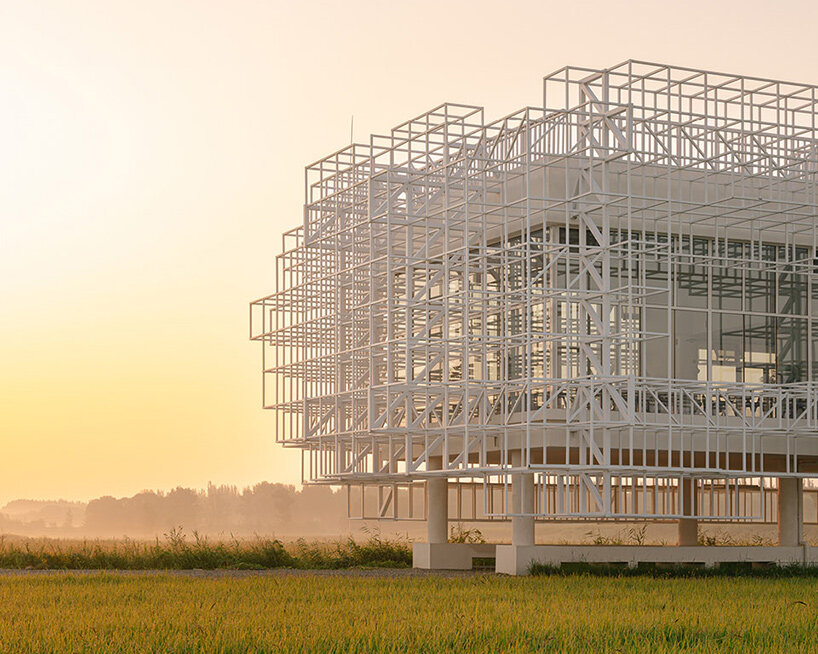
a pixelated grid of white frames softens the building’s volume and diffuses its edges
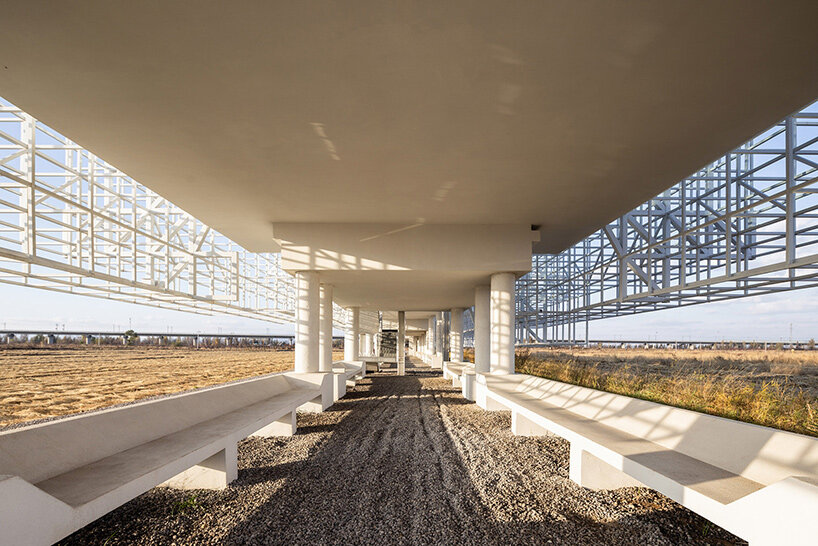
the project preserves the rural road running beneath the original bridge



